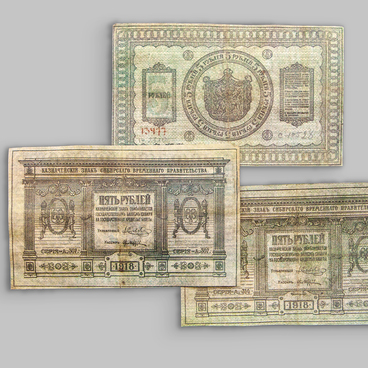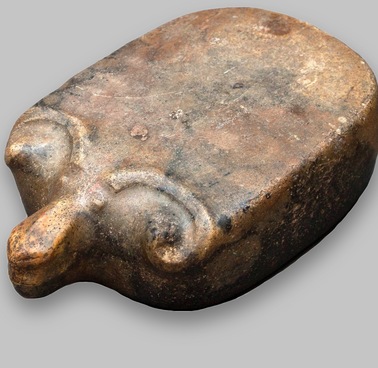The bronze cauldron became one of the first exhibits of the Tobolsk Provincial Museum. The researchers suggested that it was used by representatives of the Sargat culture, i.e. the tribes who lived from the 7th-6th centuries BC to the 3rd–5th century BC on the territory of Western Siberia from the Ural foothills along the major rivers Irtysh, Ishim, and Tobol, and along the middle course of the Om and in the lower reaches of the Iset. They led a nomadic lifestyle and engaged in cattle breeding. Large Sargat settlements with an area of about 10,000 sq. m are known, but most of the settlements were medium in size. People lived in rectangular semi-dugouts built of wood, and reeds, brush branches, and turf were also used in construction.
Currently, cauldrons and other artifacts of the Sargat culture are found on the sites of ancient settlements, altars, and burial mounds. But most often they are found not in archaeological complexes, but by chance in ordinary localities. This bronze cauldron with handles on a pallet in the shape of a cone was found in the village of Klyuchevsky in the Kurgan District of Tobolsk Province. A vertical casting seam is visible on it. This means that the cauldron was cast in a special two-part form. The master poured molten metal into the mold, and poured metal then occupied the space at the junction of the halves. Thus, there was a ridge or seam. Usually it was sanded, but sometimes the seam marks on the surface could not be hidden.
The purpose of this cauldron is not exactly known. They performed several functions. For example, among the Nganasans and Khants, the cauldron could replace a shaman’s tambourine and was involved in establishing a connection between the worlds. But researchers pay special attention to their connection with the idea of fertility and well-being, a protective function. Such cauldrons symbolized unity. They were used for turning to the gods, or asking for protection and health.
Usually the most common archaeological materials of the Sargat culture are ceramics and numerous various arrowheads. Sargat pottery is found in several types, i.e. round or elongated, conical pots, as well as flat-bottomed and round-bottomed. In addition to them and cast bronze cauldrons, stone dishes were also found. Many items of the Sargat culture have analogues in the steppe world of the late 1st Millennium BC and the first centuries of our era.
The purpose of this cauldron is not exactly known. They performed several functions. For example, among the Nganasans and Khants, the cauldron could replace a shaman’s tambourine and was involved in establishing a connection between the worlds. But researchers pay special attention to their connection with the idea of fertility and well-being, a protective function. Such cauldrons symbolized unity. They were used for turning to the gods, or asking for protection and health.
Usually the most common archaeological materials of the Sargat culture are ceramics and numerous various arrowheads. Sargat pottery is found in several types, i.e. round or elongated, conical pots, as well as flat-bottomed and round-bottomed. In addition to them and cast bronze cauldrons, stone dishes were also found. Many items of the Sargat culture have analogues in the steppe world of the late 1st Millennium BC and the first centuries of our era.

